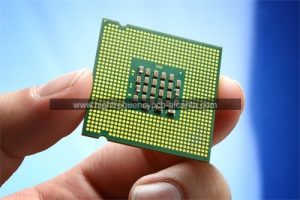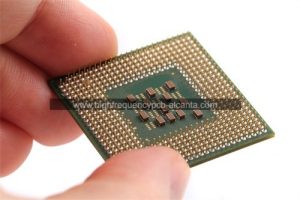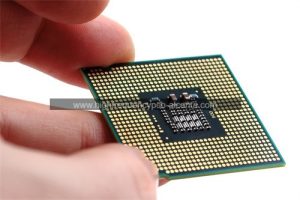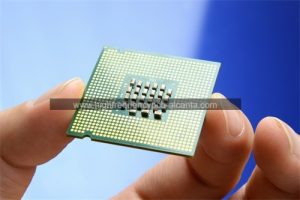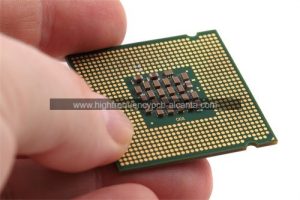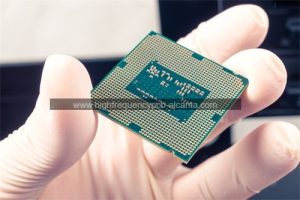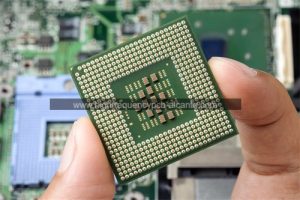What is GL102R8HF Package Substrate?
GL102R8HF Package Substrate Supplier,GL102R8HF package substrate is a leading-edge material optimized for semiconductor packaging in high-performance electronic devices. Renowned for its outstanding electrical insulation, thermal conductivity, and mechanical strength, it ensures reliable operation in demanding environments. Utilizing cutting-edge manufacturing techniques, GL102R8HF produces substrates with precise dimensions and tight tolerances. These substrates support various packaging technologies, including flip chip, wire bonding, and through-hole mounting, catering to diverse application needs. Trusted by industries such as automotive, telecommunications, and consumer electronics, GL102R8HF package substrates empower the development of innovative electronic products with superior performance and longevity.
GL102R8HF Package Substrate refers to an Intel chip packaging standard, where “TGL” likely stands for “Tiger Lake,” representing a packaging form primarily used for processors. The “102R8HF” part may denote the specific model or version of this particular packaging, but precise details would require consulting official Intel documentation for accurate information.
As for Package Substrate, it is a component of semiconductor packaging technology that denotes the board connecting the chip and external pins. This board is typically made of non-conductive materials, such as organic glass fiber composite. The substrate features wiring to transmit electrical signals and power, providing pins for connection to external devices. In Printed Circuit Board Assembly (PCBA), the package substrate plays a crucial role, influencing circuit performance, thermal characteristics, and reliability.
GL102R8HF Package Substrate, as a specific packaging standard, may possess distinctive design features to accommodate processor requirements, such as high frequency, low power consumption, or specific thermal management needs. Understanding the specifications and design parameters of this packaging is essential and can be found in relevant technical documents or datasheets. Such information is critical for PCB design and processor integration to ensure system stability and performance.
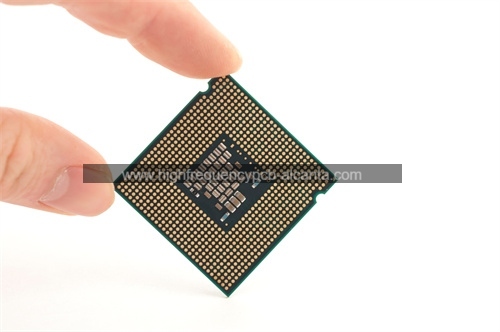
GL102R8HF Package Substrate Supplier
What is the Function of GL102R8HF Package Substrate?
The GL102R8HF Package Substrate stands as a cornerstone in the domain of integrated circuits, designed specifically for Intel processors following the Tiger Lake architecture. Its roles are diverse and encompass several critical functions:
Electrical Linkage: Acting as a conduit for electrical connections, the package substrate establishes vital links between the integrated circuit or processor and the external environment. It crafts conductive pathways, enabling the smooth transmission of signals and power to and from the chip and other components on the printed circuit board (PCB).
Guardian of Signal Integrity: Safeguarding the integrity of electrical signals is paramount for optimal electronic device performance. The package substrate actively contributes to signal integrity by mitigating distortions, crosstalk, and other factors that might compromise the quality of transmitted electrical signals.
Mastering Thermal Dynamics: Acknowledging the inevitable heat generated during processor operation, the package substrate incorporates features like thermal vias, ground planes, and other structures to proficiently dissipate heat. This prevents overheating and ensures sustained optimal processor performance.
Structural Support: Beyond its electronic functions, the package substrate provides crucial mechanical support to the integrated circuit. This support shields the processor from physical stress and environmental factors, fortifying the overall robustness and reliability of the semiconductor package.
Synchronicity with Manufacturing Processes: The design and composition of the package substrate seamlessly align with the intricacies of semiconductor fabrication processes. This involves considerations for assembly, soldering, and other manufacturing nuances crucial for crafting the final electronic device.
Precision in Form Factor: The physical dimensions and form factor of the package substrate are meticulously calibrated to sync with the entire system’s specifications. This encompasses adhering to PCB dimensions and accommodating the specific requirements of the electronic device where the processor seamlessly integrates.
Grasping these multifaceted functions is imperative for engineers navigating the intricacies of designing and manufacturing electronic systems. It empowers them to fine-tune the performance, reliability, and thermal characteristics of integrated circuits, thereby shaping the seamless functionality of electronic devices.
What Are the Different Types of GL102R8HF Package Substrate?
The GL102R8HF Package substrate is associated with a particular type of integrated circuit (IC) package, though detailed specifications and manufacturer information are currently elusive. Nevertheless, exploring common IC package substrates provides a broader context:
Ceramic Packages: Favored for high-performance ICs due to superior thermal conductivity and reliability. Varieties include ceramic dual in-line packages (CERDIP), ceramic quad flat packs (CQFP), and ceramic ball grid arrays (CBGA).
Plastic Packages: Widely employed in consumer electronics and mid-range ICs for their cost-effectiveness and straightforward manufacturing. Examples include plastic dual in-line packages (PDIP), plastic quad flat packs (PQFP), and plastic ball grid arrays (PBGA).
Metal Packages: Offering robust thermal performance and mechanical strength, often chosen for power ICs. Instances encompass metal can packages and metal flat packs.
Ceramic Ball Grid Arrays (CBGA): Characterized by a ceramic substrate with solder balls for surface mounting, prevalent in high-reliability sectors like aerospace, military, and automotive electronics.
Plastic Ball Grid Arrays (PBGA): Utilizing a plastic substrate with solder balls, striking a balance between thermal efficiency and common usage in consumer electronics, networking, and telecommunications.
Flip Chip Packages: Placing the IC face down enables direct electrical connections to the substrate using solder bumps or copper pillars. This configuration excels in high-performance computing and mobile devices.
Wafer-Level Chip-Scale Packages (WLCSP): Compact packages with dimensions resembling the IC die, directly mounted onto the PCB. Valued for space-saving advantages, particularly in mobile devices and wearables.
These examples showcase the diversity in IC package substrates, each tailored to specific needs. The distinct attributes of the GL102R8HF Package substrate hinge on the IC’s requirements and designated applications. For a deeper understanding, consulting the manufacturer’s datasheet or documentation is recommended.
What is the Relationship Between GL102R8HF Package Substrate and IC Packaging?
In the realm of integrated circuits (ICs), the GL102R8HF Package substrate emerges as a linchpin, weaving a tapestry of functionality and connectivity. Let’s unravel the distinctive relationship between this IC package and its substrate with a fresh perspective:
Architectural Nexus: Beyond being a mere substrate, it serves as the architectural nexus that binds the IC to the external circuitry on the printed circuit board (PCB). It’s the unseen maestro orchestrating the union of physical and electrical elements.
Harmonizer of Signals: Going beyond its foundational role, the substrate transforms into a harmonizer of electrical signals. It’s akin to a conductor ensuring that the intricate melodies of signals resonate without discord, with an emphasis on preserving their purity.
Conductor of Thermal Equilibrium: Embracing a role akin to a thermal conductor, the substrate masterfully manages the ebb and flow of heat. Through ingenious features like thermal vias and heat sinks, it conducts a symphony of thermal equilibrium, preventing overheating and maintaining a cool, composed performance.
Steward of Structural Fortitude: Far from a passive bystander, the substrate assumes the role of a vigilant steward. It shields the IC from the rigors of the physical realm, standing resilient against stresses, vibrations, and environmental elements, ensuring the structural fortitude of the entire ensemble.
Synchronized Manufacturing Partner: Beyond its performance on the stage, the substrate seamlessly synchronizes with the intricate steps of the manufacturing process. It becomes a dance partner, moving in tandem with the choreography of assembly and soldering, contributing to the seamless production of the IC package.
Architectural Aesthete: In the visual realm, the substrate transitions into an architectural aesthete. It sculpts the dimensions and contours of the IC package, shaping not just its physical form but also determining how gracefully it integrates into the visual tapestry of electronic devices and PCB landscapes.
In essence, the GL102R8HF Package substrate transcends its traditional role, metamorphosing into an active collaborator in the symphony of IC packaging. It’s not merely a canvas; it’s an artist, painting a picture of connectivity, signal harmony, thermal equilibrium, and structural resilience in the grand performance of integrated circuits.
How Does GL102R8HF Package Substrate Differ from Regular PCBs?
Distinguishing the GL102R8HF Package substrate from regular Printed Circuit Boards (PCBs) involves recognizing specialized functionalities tailored for integrated circuits (ICs). Here’s a fresh perspective on the disparities:
Tailored for IC Packaging: The GL102R8HF Package substrate is intricately designed for housing and supporting integrated circuits, specifically adhering to the requirements of the TGL102R8HF IC package. In contrast, regular PCBs serve a broader purpose, accommodating various electronic components and connections in a generic fashion.
Critical Electrical Paths: The package substrate emphasizes critical electrical paths specific to the integrated circuit it houses. This specialization ensures optimal signal integrity and transmission, a feature not as pronounced in regular PCBs where diverse components may have varying signal requirements.
Enhanced Thermal Management: GL102R8HF Package substrates often integrate advanced thermal management features to address the specific heat dissipation needs of the enclosed IC. Regular PCBs may not prioritize such intricate thermal considerations and features.
Customized Form Factor: The form factor of the GL102R8HF Package substrate is intricately tailored to fit the dimensions and specifications of the associated IC package. In contrast, regular PCBs are more generic, accommodating a variety of components with varying form factors.
Specialized Manufacturing Processes: The manufacturing processes for GL102R8HF Package substrates involve specific considerations aligned with IC packaging requirements. Regular PCBs, on the other hand, adhere to standard manufacturing processes applicable to a diverse range of electronic components.
Mechanical Support for ICs: GL102R8HF Package substrates offer specialized mechanical support, ensuring the structural integrity and protection of the enclosed IC. Regular PCBs provide general structural support for various electronic components without the same level of customization.
Application-Specific Design: The design of the GL102R8HF Package substrate is tailored to the application and requirements of the specific IC it hosts. In contrast, regular PCBs are designed for broader applications and may lack the nuanced customization seen in package substrates.
In summary, the GL102R8HF Package substrate stands out by its application-specific design, specialized electrical paths, enhanced thermal management, and custom form factor, making it distinct from the more generic and versatile nature of regular PCBs.
What are the Main Structures and Production Technologies of GL102R8HF Package Substrate?
Exploring the intricate details of the GL102R8HF Package substrate demands specific insights from the manufacturer, as precise information is currently unavailable. Nevertheless, let’s delve into the general landscape of structures and production technologies commonly associated with integrated circuit (IC) package substrates:
Structural Components:
Substrate Material: Acting as a foundational support, substrate materials vary and may include ceramics like alumina or aluminum nitride, organic laminates such as FR-4, or even metal like copper.
Wiring Layers: Forming a complex network, typically composed of copper, wiring layers establish connections between the IC’s internal components and the external pins or balls. Techniques like photolithography and etching sculpt these intricate patterns.
Die Attach Pad: Reserved for securing the IC die, this pad utilizes adhesive or solder for attachment, providing both mechanical stability and efficient thermal conduction.
Bonding Pads: Metal segments on the substrate’s surface, bonding pads play a pivotal role in establishing connections between the IC die and the wiring layers through wire bonds or solder bumps.
Solder Mask: Acting as a protective shield, the solder mask covers the substrate’s surface, safeguarding against unintended solder connections while leaving the bonding pads exposed.
Production Techniques:
Substrate Fabrication: Involving meticulous material selection, shaping, and surface preparation, substrate fabrication employs techniques like ceramic molding, laminate pressing, and metal deposition.
Wiring Layer Formation: Utilizing photolithography, this process employs a patterned mask to expose photoresist on the substrate’s surface. Subsequent etching refines the exposed areas, creating the desired wiring pattern.
Die Attachment: Employing methods like adhesive bonding or solder reflow, die attachment involves applying adhesives or solder pastes to the substrate’s die attach pad, with the die secured under controlled heat and pressure.
Wire Bonding: Establishing connections between the IC die’s bonding pads and the substrate’s wiring layers, wire bonding utilizes fine metal wires and techniques like thermocompression bonding or ultrasonic bonding.
Solder Ball Attachment: For packages featuring solder balls, attachment processes like solder reflow or solder paste printing are employed, connecting these balls to the substrate’s bonding pads.
These insights offer a broader understanding of substrate structures and production methods commonly encountered in IC packaging. For specific details pertaining to the GL102R8HF Package substrate, consulting the manufacturer’s official documentation and product datasheets is advised.
Frequently Asked Questions (FAQs)
What is GL102R8HF Package substrate?
The GL102R8HF Package substrate refers to a specific type of integrated circuit (IC) package substrate used in electronic devices.
What are the main structures of GL102R8HF Package substrate?
The main structures of the GL102R8HF Package substrate typically include the substrate material (such as ceramic, plastic, or metal), conductive traces, bonding pads, vias, and solder balls or leads for electrical connections.
What production technologies are used for GL102R8HF Package substrate?
Production technologies for GL102R8HF Package substrates may vary depending on the specific design and requirements, but common techniques include substrate manufacturing (e.g., ceramic or plastic molding), thin film deposition (e.g., for metallization layers), photolithography (for patterning conductive traces), via drilling and filling, solder ball attachment, and encapsulation.
What are the benefits of using GL102R8HF Package substrates?
Benefits of GL102R8HF Package substrates may include high reliability, thermal performance, electrical connectivity, and mechanical durability, depending on the specific materials and production techniques employed.
Are there any specific design considerations for GL102R8HF Package substrates?
Design considerations for GL102R8HF Package substrates may include thermal management, signal integrity, size constraints, and compatibility with manufacturing processes and assembly techniques.
Where can I find more information about GL102R8HF Package substrates?
For more detailed information about GL102R8HF Package substrates, including specifications, datasheets, and application notes, it’s recommended to consult the manufacturer’s documentation or contact their technical support team.
Conclusion
In conclusion, the GL102R8HF Package substrate is a specialized component designed to provide a robust foundation and support for integrated circuits (ICs) within electronic devices. Its significance lies in its tailored structures and production technologies, crafted to meet the specific requirements of IC packaging.
This substrate encompasses a variety of features, including its material composition, intricate wiring layers, die attachment mechanisms, and thermal management capabilities. The choice of materials, such as ceramics, organic laminates, and metals, contributes to its overall functionality.
In comparison to regular Printed Circuit Boards (PCBs), the GL102R8HF Package substrate stands out for its application-specific design, emphasizing critical electrical pathways, enhanced thermal management, and compatibility with unique IC packages.
Understanding the benefits of utilizing the GL102R8HF Package substrate includes recognizing its potential to enhance electrical performance, improve thermal dissipation, and contribute to overall system reliability. Its applications span across various industries, from consumer electronics to automotive and industrial sectors.
For those seeking more detailed information, it is recommended to refer to the manufacturer’s documentation, datasheets, and technical specifications. Customization options may be available to address specific design considerations for diverse applications.
In essence, the GL102R8HF Package substrate plays a pivotal role in the intricate world of IC packaging, ensuring the seamless integration and optimal performance of integrated circuits within modern electronic devices.
 Professional high frequency circuit board supplier
Professional high frequency circuit board supplier
